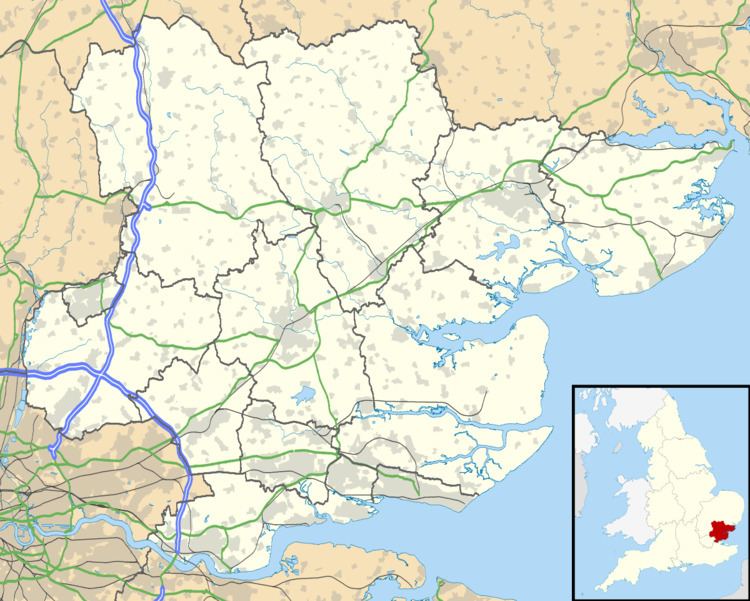OS grid reference TM244308 Post town HARWICH District Tendring | Sovereign state United Kingdom Postcode district CO12 Local time Saturday 1:28 AM Dialling code 01255 | |
 | ||
Weather 8°C, Wind S at 10 km/h, 99% Humidity | ||
Dovercourt is a small seaside town in Essex, England. It is older than its smaller but better-known neighbour, the port of Harwich, and appears in the Domesday Book of 1086. Today the towns are contiguous.
Contents
Map of Dovercourt, Harwich, UK
History
The Saxon lord Wulwin/Ulwin was lord in 1066; by 1086 the estate was in possession of Aubrey de Vere I and remained part of the barony of his descendants the Earls of Oxford until the 16th century. It formed part of the dowry of Juliana de Vere when she married Hugh Bigod in the mid-12th century, and the sub-tenancy passed to the Bigod earls of Norfolk who held it as one knight's fee of the Veres. Countess Juliana's son Roger Bigod, 2nd Earl of Norfolk founded a chapel at Harwich and granted it to Colne Priory, Essex, a Vere foundation.
Dovercourt is rich with civil war history and as a seaside resort offers shops and cafes for visitors and residents. The main shopping area is The High Street, with shops from independents to the national chains. The town is served by Dovercourt railway station.
In 1863 Trinity House erected two cast iron lighthouses on the beach. They were used until 1917 to guide ships around Landguard Point; the two lights aligned indicated the right course. The deep-water channel is now marked by buoys. The lighthouses were restored in the 1980s. The lighthouses are sometimes known as Dovercourt Range Lights.
The 1980s BBC sitcom Hi-de-Hi! was filmed in Dovercourt, at Warner’s Holiday Camp, which transformed into Maplin’s. The camp, under the direction of Anna Essinger and aided by several of the staff from Bunce Court School, had been used in 1939 for refugee children arriving to be placed in foster homes in the Kindertransport mission, and was later re-developed as a housing estate, which is known as Hightrees.
